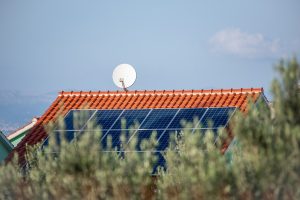Your home’s electrical installation is invisible most of the time—hidden behind walls, tucked under floors, and concealed in ceiling voids. This invisibility can create a dangerous sense of security, leading many homeowners to assume that because their lights work and sockets provide power, everything must be functioning safely. However, electrical installations deteriorate over time, safety standards evolve, and usage patterns change in ways that can compromise safety. Understanding the current condition of your electrical installation could literally be a matter of life and death.
The Hidden Dangers of Ageing Electrical Systems
Electrical installations installed decades ago may appear to function normally whilst harbouring serious safety defects that only become apparent during professional inspection. Insulation on cables deteriorates gradually, earth connections corrode, and circuit protection devices can fail without obvious symptoms. These hidden problems often manifest suddenly and catastrophically, giving little warning before causing fires or electric shocks.
Many homes built before 1970 still retain original wiring that predates modern safety standards. These installations may lack adequate earth bonding, have insufficient circuit protection, or use cable types that are no longer considered safe for long-term use. Whilst not immediately dangerous, these installations pose increasing risks as they age and as household electrical demands exceed their original design parameters.
Modifications made over the years by unqualified persons represent another significant risk factor. DIY electrical work, often carried out with good intentions, frequently fails to meet safety standards and can create dangerous conditions. Even work completed by qualified electricians decades ago may no longer comply with current regulations, as safety standards have evolved considerably over recent years.
Modern Safety Standards vs. Older Installations
Contemporary electrical safety standards are far more comprehensive and demanding than those applied to older installations. Current regulations require RCD protection for most circuits, adequate earth bonding throughout properties, and circuit protection devices that respond much faster to dangerous conditions than older equipment.
Consumer units installed before 2008 often use rewirable fuses or early MCB designs that provide inadequate protection compared to modern equipment. These older systems may allow dangerous fault currents to persist for extended periods, creating fire risks and failing to protect against electric shock effectively. Additionally, many older consumer units have inadequate capacity for modern electrical loads, leading to overloading and potential safety hazards.
Earthing arrangements in older properties frequently fail to meet current standards. Proper earth bonding to gas pipes, water services, and structural metalwork is essential for safety but was often inadequate or absent in older installations. Without effective earthing, dangerous voltages can appear on normally safe metalwork during fault conditions, creating serious shock risks.
Warning Signs That Demand Immediate Attention
Several obvious warning signs indicate potentially dangerous electrical conditions that require immediate professional attention. Frequent circuit breaker tripping or fuse blowing suggests circuit overloading or developing faults that could lead to fires. Mild electric shocks from appliances or switches indicate earth faults that pose serious safety risks and require urgent investigation.
Burning smells, particularly those seeming to originate from electrical accessories or consumer units, demand immediate action. These odours often indicate overheating components that could ignite surrounding materials. Similarly, warm or discoloured switch plates, socket outlets, or consumer unit covers suggest dangerous overheating that requires professional diagnosis and repair.
Flickering lights, particularly when appliances switch on or off, may indicate loose connections that create fire risks through arcing. Intermittent electrical problems are often more dangerous than complete failures because they indicate deteriorating conditions that could suddenly become catastrophic.
The Risks of Electrical Fires and Electrocution
Electrical fires represent one of the most serious risks from defective installations, accounting for thousands of house fires annually across the UK. These fires often start in concealed locations, spreading significantly before detection. Unlike other fire causes, electrical fires can continue burning even after water application if the electrical supply remains connected, making them particularly dangerous and difficult to extinguish.
Electrocution risks vary depending on the nature of electrical defects but can prove fatal even at domestic voltage levels. Children and elderly family members face particular vulnerability due to reduced ability to release themselves from electrical contact. Modern RCD protection dramatically reduces electrocution risks, but many older installations lack this crucial safety feature.
The financial implications of electrical fires extend far beyond property damage. Insurance companies increasingly scrutinise electrical installation conditions when assessing claims, and may refuse coverage if installations fail to meet reasonable safety standards. Regular electrical safety inspections provide important documentation that demonstrates responsible property maintenance.
Identifying Your Installation’s Age and Condition
Understanding your electrical installation’s age provides important clues about potential safety issues and upgrade requirements. Installations completed before 1970 almost certainly require significant safety improvements, whilst those from the 1970s and 1980s may need consumer unit upgrades and RCD protection additions.
Visual inspection of your consumer unit can reveal important age indicators. Older installations often feature rewirable fuses, early circuit breaker designs lacking RCD protection, or consumer units with outdated labelling and switching arrangements. However, visual assessment has limitations—many safety defects remain hidden and require professional testing equipment to identify.
Cable types provide another age indicator, though these are typically concealed and difficult to assess without professional inspection. Modern installations use cables with enhanced fire resistance and improved insulation materials, whilst older installations may use cable types that no longer meet current safety standards.
The Importance of Professional Electrical Inspection
Professional electrical inspections provide comprehensive assessment of installation safety using specialised testing equipment that reveals problems invisible to visual examination. These inspections test insulation resistance, earth fault loop impedance, RCD operation, and circuit continuity—all crucial safety parameters that cannot be assessed without proper equipment and expertise.
Qualified electricians follow systematic inspection procedures that examine every aspect of electrical installations, from consumer units and main earthing arrangements through to individual circuits and outlets. This comprehensive approach identifies both immediate dangers and potential problems that could develop into safety hazards over time.
Professional inspection reports provide detailed documentation of installation condition, safety defects, and recommended improvements. This documentation proves invaluable for insurance purposes, property sales, and planning electrical upgrade work in order of priority.
Understanding Electrical Installation Condition Reports
Electrical Installation Condition Reports (EICRs) provide formal assessment of electrical installation safety and compliance with current standards. These reports classify any defects found according to their severity—from minor observations requiring no immediate action through to dangerous conditions demanding urgent remedial work.
Code C1 defects indicate immediate danger requiring urgent attention before continued use of the installation. These might include exposed live conductors, missing earth bonding, or failed RCD protection. Code C2 defects represent potentially dangerous conditions that require remedial action, whilst Code C3 observations highlight areas for improvement that don’t pose immediate safety risks.
EICRs include recommendations for remedial work prioritised according to safety implications and cost-effectiveness. This guidance helps homeowners plan electrical upgrades systematically, addressing the most critical safety issues first whilst budgeting for less urgent improvements over time.
Common Safety Defects in Domestic Installations
Inadequate RCD protection represents one of the most common safety defects found during professional inspections. Many older installations lack RCD protection entirely, whilst others have RCD devices protecting only some circuits. Current standards require RCD protection for most domestic circuits, particularly those supplying sockets and bathroom installations.
Poor earthing arrangements affect many older properties, with inadequate main earthing conductors, missing supplementary bonding, or corroded earth connections creating serious safety risks. Effective earthing is crucial for both fire prevention and electric shock protection, making these defects particularly significant.
Overloaded circuits occur frequently in homes where electrical demands have increased beyond the original installation’s capacity. Additional sockets added over the years, increased appliance usage, and higher-powered devices can all contribute to circuit overloading that creates fire risks through overheating.
The Benefits of Electrical Upgrades
Modern electrical installations offer significant safety advantages over older systems through improved circuit protection, enhanced fire resistance, and better shock prevention. RCD protection dramatically reduces electrocution risks, whilst modern circuit breakers provide faster, more reliable protection against dangerous fault conditions.
Upgraded installations typically include additional circuits that reduce overloading risks and provide more convenient power distribution. This additional capacity accommodates modern electrical demands without compromising safety, whilst providing flexibility for future requirements as electrical usage continues increasing.
Smart electrical systems increasingly offer enhanced safety monitoring and control capabilities. Some modern consumer units include remote monitoring systems that alert homeowners to developing problems before they become dangerous, whilst smart RCD devices provide detailed information about electrical system performance.
Planning Electrical Safety Improvements
Electrical safety improvements should be prioritised according to risk levels and available budgets. Immediate dangers require urgent attention regardless of cost, whilst less critical improvements can be planned systematically over time to spread expenses and minimise disruption.
Consumer unit replacement often provides the most significant safety improvement for older installations, introducing RCD protection, improved circuit breakers, and additional capacity for modern electrical demands. This work typically requires Building Regulations notification but transforms installation safety and reliability.
Rewiring may be necessary for very old installations with deteriorated cables or inadequate circuit arrangements. Whilst expensive and disruptive, rewiring provides completely modern electrical infrastructure that will serve safely for decades whilst adding significant property value.
Regular Maintenance and Safety Practices
Simple maintenance practices can help preserve electrical installation safety between professional inspections. Regular testing of RCD devices using built-in test buttons ensures these crucial safety devices remain operational. Any RCD that fails to trip during testing requires immediate professional attention.
Visual inspection of electrical accessories can identify obvious problems before they become dangerous. Cracked or damaged socket outlets, warm switch plates, or any signs of burning or overheating all require professional investigation. Similarly, any mild electric shocks or tingling sensations from electrical equipment demand immediate attention.
Avoiding overloading by limiting the number of appliances connected to individual sockets helps prevent dangerous heating. Understanding your electrical installation’s limitations and respecting them through appropriate usage patterns maintains safety margins and extends installation life.
When Professional Help Is Essential
Electrical safety is never an appropriate area for DIY experimentation or cost-cutting through unqualified contractors. Professional electricians possess the training, equipment, and experience necessary to identify safety defects and implement appropriate solutions safely and effectively.
Emergency electrical problems require immediate professional attention, particularly those involving burning smells, electric shocks, or obvious damage to electrical equipment. Attempting to diagnose or repair these problems without proper expertise and equipment can prove fatal.
At Martin Kaine Electrical, we specialise in comprehensive electrical safety inspections and remedial work that brings installations up to current safety standards. Our qualified engineers provide detailed EICRs, prioritised improvement recommendations, and professional installation services that ensure your home’s electrical system protects your family effectively. Don’t gamble with electrical safety—contact us today to arrange a comprehensive inspection and discover exactly how safe your electrical installation really is.




